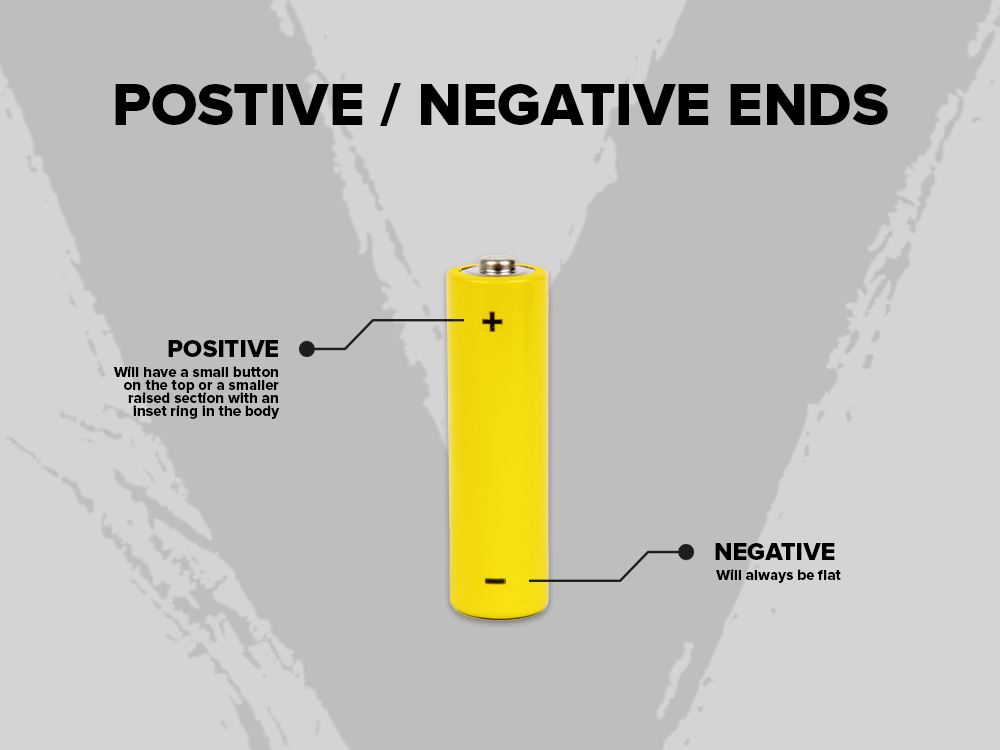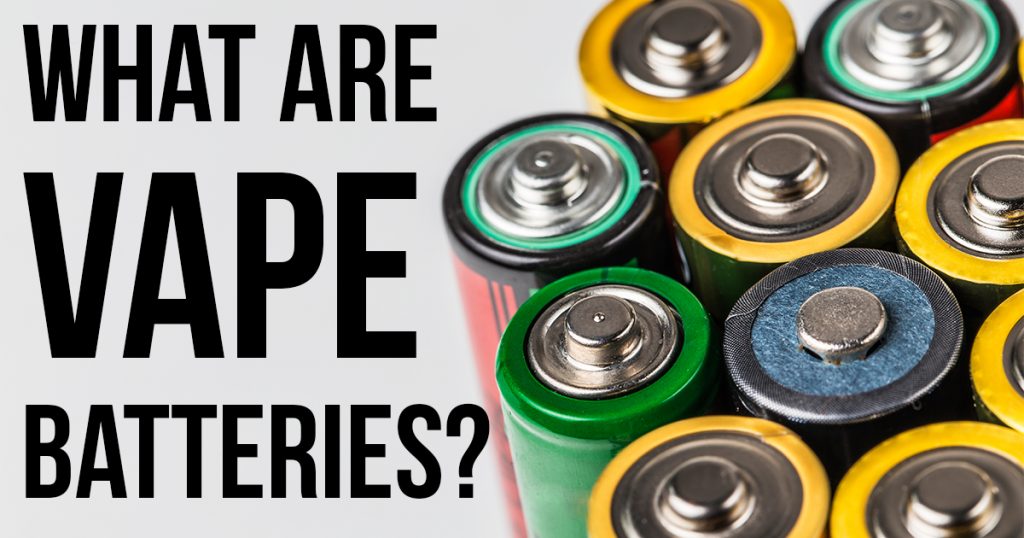I can vividly remember the simplicity of the first generation vape devices, such as the CE4, which came with every component built-in and only required a user’s touch to operate. Fast forward to the present day and things couldn’t be any more different with vape mods and such devices offering more customisation than ever. While devices such as the aforementioned CE4 are undeniably easier from the perspective of the user, there are many benefits to be had from using devices with external batteries.
If you’re looking to purchase a new mod kit then you might have some slight trepidation with external battery side of things. Put simply, this is nothing you need to be scared of as it’s extremely simple to grasp. However, we’ve seen other guides which bombard the reader with unneeded jargon which only helps to further confuse anyone looking to delve into the world of vape batteries. We’re going to keep things in layman’s terms and answer the most important questions on this subject.
Let’s begin, shall we?
1. What are external vape batteries?
External batteries are exactly what they say on the tin: batteries than don’t come pre-built into your mod. For vape devices, the most common battery type is the 18650, which comes in a design which you’ll be familiar with and functions in the same way as batteries you’d use in day-to-day life. Like regular batteries, you’ll be able to differentiate between the positive and negative terminals; the negative end will always be flat, and the positive end will have a small button on the top or a smaller raised section with an inset ring in the body.

Now, what upsides do external batteries bring with them? After all, devices with built-in batteries are without a doubt easier to use, so surely there must be several benefits to using external batteries and sacrificing the ease of use factor? Well, yes, there are many and we’re going to outline them now.
2. Internal vs. External batteries
Okay, so let’s briefly touch on the pro’s of each battery type before delving a little more in-depth.
Internal:
- Easy to use
- No fitting required
- Compatibility guaranteed
External:
- External charging
- Extends life of mod
- More choice over battery type
- Quick and easy to replace spare batteries
- Interchangeable with other devices using the same battery type
One of the main upsides with using external batteries is the fact that you can replace the battery when it reaches the end of its life in lieu of having to replace the entire mod. Whether you’re looking at it from a savings perspective or an environmental perspective, this is a win-win for everyone.
With built-in battery mods, if your battery runs flat while you’re at work or on the go, it’ll need to be recharged which can be awkward for some. With an external battery, you’d be able to avoid this hassle by simply carrying a spare battery and switching them over when one dies.
Using an external battery device also offers better freedom of choice for the type of battery you buy. For instance, certain batteries offer a longer lifespan so you can opt for these rather than being stuck with the battery included with your device.
3. Li-Ion Battery Basics
Okay, so at first glance at a vape batteries page, you may be a little thrown off by the names of them. They all typically follow the same format, so we can breakdown this explanation into two sections: the numbers and the letters. Let’s do that now.
- Letters: The first letter indicates the basic makeup of the battery. The second and most important letter indicates the material. “I” means that it is a Lithium-Ion class battery, “C” refers to the material as being cobalt, “M” refers to manganese, “N” refers to nickel, and “R” simply means rechargeable.
- Numbers: The numbers you’ll see in the name of each battery is a measurement referring to its size. The standard batteries used for vape devices are called “18650” batteries. This means the battery is 18mm in diameter and 35mm in length. The 0 at the end indicates that it’s a round battery.
So, using the information we’ve just learnt, we can decipher such combinations as “IMR” as being a lithium-manganese battery and “ICR” as being a lithium-cobalt battery. The chemistry of the battery gives a good indication as to how the battery will perform, so let’s look at a few of the most relevant.
- IMR (Lithium-manganese): These refer to batteries that allow a lot of current to flow without increasing the internal temperature much. They don’t require any protective circuitry built-in as the design is intrinsically safe.
- INR (Lithium-manganese-nickel): Due to the similar manganese content, these batteries offers lots of the same benefits as the IMR batteries, but with nickel added to produce a “hybrid” chemistry battery. This results in the INR batteries offering high current, low operating temperatures and a higher capacity than the IMR batteries.
- ICR (Lithium-cobalt): These are the highest-energy batteries that can be used in vape devices, but be warned that they don’t function as well as the aforementioned when it comes to safety. Additional protective circuitry is needed for use in a mod, which is added by a third-party company.
4. What battery is right for my mod?
Okay, now that we’ve covered a lot of the initial jargon, we’ll move onto selecting the perfect mod battery for your vape device. If you want to achieve the very best possible performance from your device, there are a lot of alleyways you can go down. But, keeping it simple, the main areas to delve into are the battery size, the amount of them needed, and your safety requirements.
5. Common Vape Battery Sizes
Most available mods on the market will take 18650 batteries which pretty much run as standard. There are some exceptions to this, however. If you’re using a compact vape device, such as a mechanical tube mod, you might run into 18350 or 18500 size batteries, which will look near-identical in width but slightly shorter in height than the standard batteries.
For the more modern devices, you may happen to run into larger battery sizes such as the 26650, which are the largest size compatible with vape devices. Smaller sizes which are less commonly used are the 20700 and 21700 batteries.
Nine times out of ten you’re going to be best off using the standard 18650 battery, but, always make sure you first reference the manual or manufacturer’s website to make sure this is correct. As the battery size increase or decreases, so does the size and shape of the battery itself. So, it should be clear to you when you’re using the wrong type of battery as it simply won’t fit.
6. What is a battery duty cycle?
A battery duty cycle simply refers to the approximate number of recharges each battery can be “cycled” through before it’ll no longer hold a charge. The overall number is dependent on the manufacturer you’ve purchased from and the battery size you’re using. On average, duty cycles can vary anywhere between 150 and 500 depending on the core battery composition and the care of the battery.
7. Battery Safety
So, I’m now going to take the role of a slightly patronising teacher and bombard you with the dos and dont’s of battery safety. I’ll keep it concise and to the point as each point speaks for itself. Let’s begin…
- ALWAYS make sure you’re using the correct battery for your vape device
- NEVER use a battery that has any noticeable damage
- ALWAYS charge batteries on an approved charger for that particular battery
- NEVER leave a battery to charge unattended
- NEVER overcharge your batteries
- NEVER have batteries stored near other metal objects
- NEVER store batteries in your pocket without a protective case on them
- NEVER store your batteries in extreme heat
Please view the Battery Safety section of our website for a more thorough deepdive into the issues we’ve just raised. Take a mental note. Recite them in front of the mirror each morning. Whatever works for you, just ensure that you follow these rules and the rest will be history.
We hope this article has been informative and has helped clear up any confusion you may have had on this subject. Feel free to leave a comment below or get in touch with us if you have any questions that remain; we’re always delighted to help our customers!
Be sure to check out the Help & FAQ section of our website for detailed breakdowns of the most searched queries in the industry.
Thanks & see you next time!

















